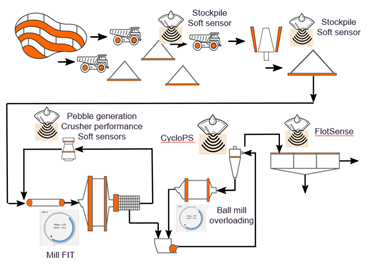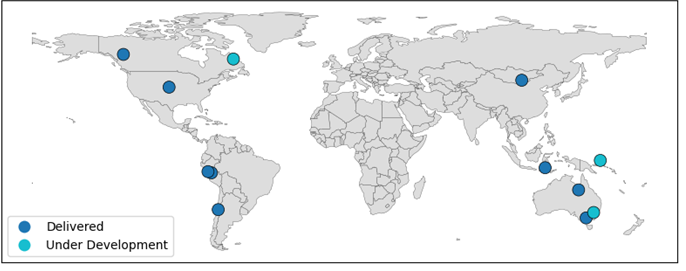
International interest in Julius Kruttschnitt Mineral Research Centre (JKMRC) soft sensors is rising as operators seek options for improving process insight and control without the technological risk.
The JKMRC’s soft sensor offerings – which cover site processes from stockpiling to flotation – launched officially in 2019 with the MillFit tool but have experienced increased demand in the last year as operators run into issues implementing new ‘hard sensor’ technology into their operations.
Whereas hard sensors are physical devices installed onto equipment, soft sensors are mathematical models that use a variety of measurements to emulate the role, and infer the results, of a sensor.
JKMRC Director and mineral processing expert Professor Mohsen Yahyaei said industry’s interest in automation and digitisation of processes is growing, but data reliability was frustrating progress.
“Industry has moved quickly towards automation and real-time prediction of processes, but a reliance on hard sensors for the data that underpins those processes has proved problematic,” Professor Yahyaei said.
“We have seen many operators losing trust in these automated systems, not because of the systems themselves, but because hard sensor outputs occasionally lose accuracy and leading to the control system making incorrect decisions.
“That is why we started to leverage our mathematical models and our fundamental process understanding to create soft sensors that are underpinned by data sites are familiar with, from sources they already use, to infer critical information.
“For instance, our MillFit tool, which was the first soft sensor we released, estimates the wear condition of the mill, the ball and rock filling, and particle trajectory, using only data from sensors that are already installed on most SAG mills.
“The same approach is being applied to a range of other soft sensors which, combined, will provide insights across the whole circuit – for pumps, cyclones, stockpiles, and more."
JKMRC soft sensors can now be found at 22 sites across eight countries, with six new proposals underway, including a MillFit tool that has been running continuously at Indonesia’s Batu Hijau mine since 2019.

Professor Yahyaei said he believes trust and ease of implementation have been the largest drivers behind the success of the soft sensors.
“If you are driving your car and relying on a faulty fuel gauge – a hard sensor – you won’t notice something is wrong until your car stops working, and then chances are you won’t trust fuel gauges for the rest of your life,” Professor Yahyaei said.
“In that context, a soft sensor would measure the weight of your fuel tank to calculate how much fuel you have and then compare it against your gauge, so as soon they mismatch it's clear something is wrong and it can be addressed before there is a problem.
“Site teams face similar issues with sensors failing intermittently or drifting from calibration and only picked up when a problem happens. Our soft sensors are a backup in the case of a fault, and increase confidence in the sensor outputs when operating.
“It also helps that implementing soft sensors is minimally disruptive and doesn’t introduce any new equipment.
“Essentially, we just need to identify which equipment they will be used on, request a list of data that will be needed, calibrate the soft sensors on off-line data and deliver a prototype. After a period of testing, the soft sensor can then be run live.
“After a few months of checking performance and providing support, the soft sensors essentially just become part of the team’s routine – it’s an easy process.”



